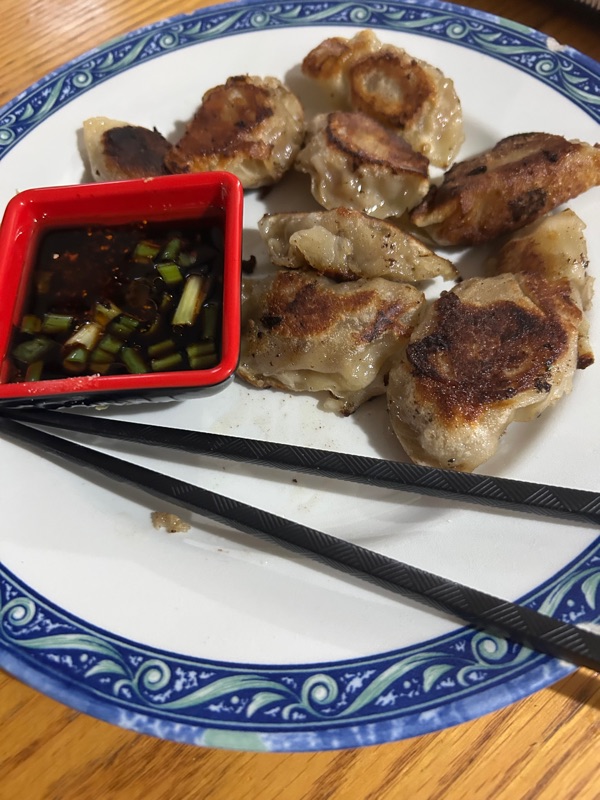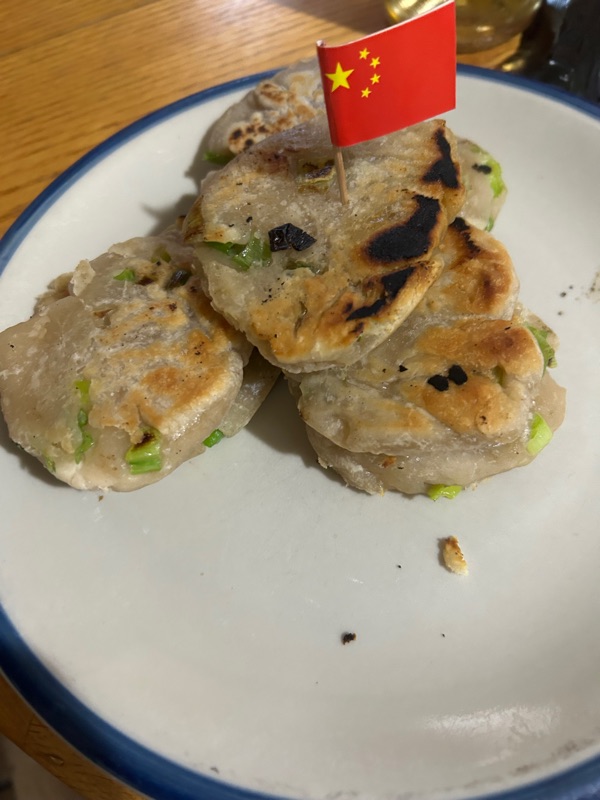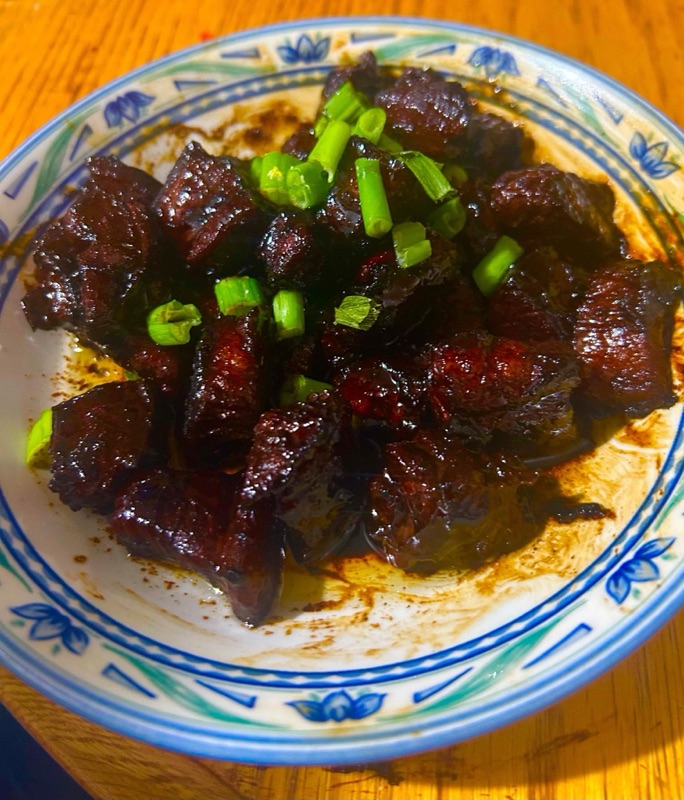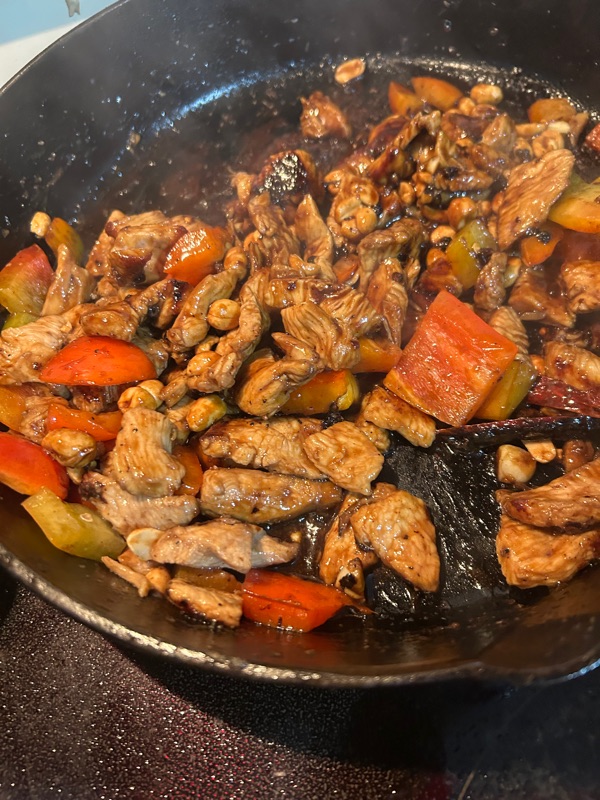China, Pt. 1 (The Mainland): The People Are The Heroes Now
China, Pt 1 (The Mainland): The People Are the Heroes Now
China’s story isn’t a straight line—it’s a wheel, spinning through dynasties that rose on the backs of peasants, only to crumble under their fists. From the Han’s silk-clad emperors to the Qing’s brittle mandarins, power here has always been a dance of excess and collapse, each cycle leaving behind rice fields, iron pans, and the stubborn hands that worked them. The Middle Kingdom’s ancient bones—its rivers, its walls—still hum with the shouts of those who tilled, fought, and fed it into the present. In John Adams’ 1987 opera about Nixon’s meeting with Mao, Mao declares, “The people are the heroes now.” But they’ve been the muscle all along—turning scarcity into sustenance, rebellion into recipes.
This week, we’re splitting China into four posts—not out of whimsy, but necessity. The People’s Republic claims Taiwan, snarling at any nation that dares recognize it, while the Republic of China, perched on that island, still dreams of the mainland and Mongolia as its own. Then there’s Hong Kong and Macau, special administrative regions carved by colonial knives and left simmering in their own pots. These aren’t just borders—they’re fault lines, each with a cuisine and a history that refuses to bend. We’ll use that fracture to explore four Chinas—each with its own fight and flavor. Today, the Mainland: a sprawl of North, Shanghai, and Sichuan heat. Tomorrow, Hong Kong’s dim sum rebellion. Then, Taiwan’s exile-born grit. Finally, Macau’s clash of cultures, where Portuguese tarts meet migrant spice. Four posts, four Chinas—because one plate can’t hold it all.
For this first plunge, we’re digging into the Mainland’s beating heart—dishes forged by the rural poor, urban rioters, and red revolutionaries. Start with Guotie, Shandong’s “potstickers,” fried crisp in the iron pans of Boxer rebels who torched foreign flags in 1899, their dumplings a middle finger to imperialists. Then Cong You Bing, scallion pancakes, born on Shanghai’s griddles in the early 1900s, greasy fuel for workers who, by 1925, rioted against the Republic’s chaos in a massacre that lit the fuse of change. Next, Hong Shao Rou, red-braised pork, once an emperor’s indulgence, reborn as Mao’s favorite on the Long March of the ‘30s—a dish that trudged 6,000 miles to feed a new China. And finally, Kung Pao Chicken, named for a Qing official, banished during the Cultural Revolution’s purges, only to rise again in the ‘80s as Deng Xiaoping’s workers reclaimed it, spicy and proud, for a nation opening its doors.
These aren’t just recipes—they’re battle cries, cooked by hands that toppled dynasties and built them anew. Today, we’re tasting the Mainland’s fire—north to south, peasant to port, emperor to comrade. Grab a pan; the revolution’s simmering.
Guotie (锅贴): Shandong Nights

You might call them “potstickers” or “Peking ravioli”—I did, until I learned their real name: Guotie (锅贴), born in the woks of northern China. Legend says it was a 9th-century fluke—imperial cooks botched a batch of boiled dumplings, letting them sizzle too long in the pan. What came out wasn’t failure but gold: crispy-bottomed pockets of dough, stuffed with whatever meat or greens the day offered. “Wok stick,” the name translates—because they clung to the iron pans they were cooked in.
This wasn’t royal food for long. It spread through the north like wildfire.Cheap flour, a scrap of pork, a fistful of chives—Guotie became the rural poor’s lifeline: cheap, portable, and easy to cook. Out in Shandong’s fields, workers hauled woks over open fires during breaks, frying dumplings between planting and harvest.
By 1899, those same pans fueled quenched a different kind of hunger. Shandong—land of farmers, fishermen, and Confucius—had been carved up by a dying Qing Dynasty, handed to foreign hands. Germans snatched Jiaozhou Bay, British and Russians split the trade, and Christian missionaries swarmed the countryside, preaching over empty stomachs. The peasants had enough.
They called themselves the Society of Righteous and Harmonious Fists—secret bands of martial artists from starving villages, young and jobless, fists clenched against the chaos. The West dubbed them “Boxers,” mocking their “Chinese boxing” as they torched foreign churches, smashed rail lines, and clashed with Qing troops and European rifles. Over 100,000 strong, they roamed Shandong, Guotie sizzling as their anger sizzled towards the foreigners. The West saw “xenophobic barbarism” and struck back, eight nations invading in 1900 to crush them. The victorious nations wrung even more concessions from the Qing government, giving Republican nationalists the spark needed to hasten its death. Through it all, Guotie endured, a crisp, greasy middle finger to the chaos.
I fried up my own, using a nice mix of pork, shrimp, and mushroom (that I used again for Hong Kong’s shumai). I didn’t make my own wrappers, as the wonton wrappers available at the grocery store work perfectly. Just put some filling in the center, fold together, and press to have a nice moon shape. I used a dumpling shaper, which gave them an almost pierogi-like curve, but they’re unmistakably potstickers.. As they are frying, the wonton wrapper likes to stick to the pan, but I was able to get that nice golden brown crunch. I also made my own dipping sauce that compliments quite nicely. Make sure you fill with a little water, as that makes them juicier.
Guotie Recipe (12 Pieces)
Filling:
- 250g ground pork (30% fat = juiciness)
- 150g shrimp (chopped)
- 1 cup Napa cabbage (salted, squeezed dry)
- 2 shiitake mushrooms (soaked, minced)
- 1 tbsp soy sauce + 1 tbsp oyster sauce
- 1 tsp each: sesame oil, sugar, cornstarch
- 2 tbsp water (for moisture)
Wrapper:
- 12 wonton wrappers (3-inch squares)
Cook:
- Sear in oil until bottoms brown.
- Add water, cover to steam.
- Uncover, crisp again.
Dipping Sauce
- 2 tbsp soy sauce
- 1 tbsp rice vinegar
- 1 tsp each: sesame oil, chili oil, sugar
- 1 tsp minced ginger
Cong You Bing (葱油饼): Greased Lightning

Shanghai is China’s largest city, and one of the busiest ports in the world. It gained this status during the Qing Dynasty, as part of a concession to foreign powers, who were allowed to maintain it as an “international” port city, where foreign nationals would have special status not afforded elsewhere in China. The foreign investment from French, British, Japanese, and American interests led to rapid industrialization and economic growth, in the textile industry in particular. While the Qing Dynasty collapsed in 1912, the Shanghai international zone remained in place during the hectic warlord-led years of the early Republic of China. The city became an economic powerhouse, with sprawling mills and docks, mostly foreign owned and operated. Migrant workers came from throughout China to work. Shanghai’s cuisine was mostly rice-based, but migrant workers brought something with them from the rural north: street food.
One of the favorite street foods was that of the scallion pancake, or Cong You Bing. These flatbreads filled with scallions had existed for centuries in the rural north, but they became the ultimate street food of industrial Shanghai, hitting the city like lightning. By the 1920s, every factory gate had a coal-fired griddle serving fried up scallion and dough magic, as workers needed a quick bite at the beginning and end of their grueling 12 hour shifts in the textile factories. The shift change at the pancake griddle became a great place for workers to catch up, and also a great place to pass messages away from prying factory owner eyes.
Long hours, deadly conditions, starvation wages—workers craved change, torn between nationalism and communism. The 1920s lit twin fuses: the Kuomintang (KMT), nationalists with a Boxer-lite vision of a unified China, fought warlords and foreigners; the Communists (CCP), fired by Russia’s red fist, eyed a worker’s republic. Through the mid-20s, they ran as a United Front, organizing Shanghai’s proles. The cong you bing stalls proved to be great places for labor organizers to pass messages between shifts, where the bosses would be none-the-wiser.
By early 1925, rage boiled over—strikes hit Japanese-owned textile mills. On sizzling griddle-lined streets, workers clashed with Japanese guards daily. May 15, 1925, it broke—guards shot dead Gu Zhenghong, a young Communist striker. The Shanghai Students Union rallied, fundraising and organizing, but student leaders got nabbed, trial set for May 30 in the British zone. That day, thousands—workers, students—flooded the streets, Cong You Bing in hand, demanding the students’ release. They swarmed the Shanghai Municipal Police precinct; British cops opened fire—9 dead, 14 wounded.
The May 30th Movement erupted—50,000 struck, protests flared. Communism’s ranks swelled tenfold; the KMT seized the spark to wrestle the Republic from foreign-backed warlords. The United Front ended soon after (more on that later), but Cong You Bing held firm—a staple of Shanghai’s workers—then and now..
Scallion pancakes are easy enough to make. You make some simple dough, roll it into balls, flatten them, brush one side with oil, salt, and scallions. Then coil it up, and flatten it again. It is important that you keep the scallions on ONE side of the pancake when you first put them on prior to the coiling.
Cong You Bing (葱油饼) Recipe (10 Pancakes)
Ingredients
- Dough:
- 3 cups all-purpose flour
- 1 cup warm water
- 4 tbsp vegetable oil (for dough)
- Filling:
- 2 cups chopped scallions
- Salt to taste
- Frying:
- Extra oil (2-3 tbsp per batch)
Instructions
- Dough: Mix flour and warm water in a bowl—stir till it clumps. Add 4 tbsp oil, knead 5 mins till smooth. Rest 30 mins, covered.
- Shape: Divide into 10 balls (~65g each). Roll one flat (6-8 inches), brush with oil, sprinkle 2-3 tbsp scallions and a pinch of salt. Roll up tight, coil into a spiral, re-roll to 6-8 inches.
- Fry: Heat 1 tbsp oil in a skillet (medium-high). Fry one pancake 2-3 mins per side till golden-crisp. Repeat—add oil as needed. Makes 10.
- Serve: Hot and greasy
- Soy-Vinegar Dipping Sauce (For 10 Pancakes)
- Ingredients
- 3 tbsp soy sauce
- 2 tbsp rice vinegar
- 1 tsp sesame oil
- 1 tsp chili oil (or ½ tsp chili flakes)
- 1 tsp sugar
- 1 tsp minced ginger (or ½ tsp ground)
- Instructions
- Dump all into a bowl—stir 1 minute till sugar dissolves, no lumps.
- Makes ~⅓ cup (~5-6 tbsp)—1-2 tsp per pancake
- Taste—Serve with hot Cong You Bing

Hong Shao Rou (红烧肉): Mao’s Red Pork
In the aftermath of the May 30th movement, the warlord-controlled regions of China weakened under pressure from the United Front. The United Front launched an expedition to the North to rout the remaining warlords and establish more centralized control. However, both the Communists and the Nationalists had their own motives for joining together. Chiang Kai-Shek, the Kuomintang Nationalist Leader, wanted to control the Communist Party from the inside. The Communists wanted to spread communism to KMT members. As the Northern Expedition was halfway through, the Kuomintang began a violent purge of communists in Shanghai, culminating in the April 12th Shanghai Massacre.
The Communists retreated and established a government in Southeastern China called the Jiangxi Soviet. But the Nationalists encircled them, launching relentless attacks on an already diminished force. As Communist leadership faltered, a young leader named Mao Zedong began to rise in prominence. Faced with annihilation or retreat, the Communists embarked on a year-long march to the far Northwestern wilderness of China. Despite protests from several Communist leaders, Mao emerged as the key strategist, guiding the Communists through their perilous escape. Thus began the period of history known as the Long March.
Mao was the son of a peasant from Hunan province. Over the course of this brutal march, he became something of a legend. His love for Hong Shao Rou, a Chinese red-braised pork belly once reserved for emperors, soon spread rapidly through the ranks. He claimed the sweet pork was brain food, that pork was good for both body and mind, and he later promoted the dish extensively. The promise of the rich dish became a sort of rallying cry for the marchers, who were trying their best to not give in to despair. “If we are to feast on the food of kings, how bad can things truly be?”
After successfully surviving the Long March, Mao became the de facto leader of the Communist Party, gaining immense respect from its members for guiding them through a grueling time. While establishing themselves in the Northwest, the KMT was facing issues in the East. The Imperial Japanese, allied with fascist forces in Europe, launched a brutal invasion of mainland China, culminating in the infamous Nanjing Massacre. Kuomintang Forces, in the face of overwhelming Japanese advances, had to undergo a forced relocation to the Southwest. The KMT and Communists once again set aside their differences and established a United Front.
Over the course of the war that was to follow, it was the Communist forces that truly began to shine. Fueled by red pork and revolutionary zeal, the Communists launched relentless guerrilla attacks from their Northwest stronghold—winning not just battles, but the hearts of the peasantry. The people would remember this when the Japanese surrendered in 1945. As the KMT government tried to delay the surrender of Japanese forces to hold off communist control of areas the Japanese were vacating, the communists prepared for renewed conflict with Chiang Kay-Shek’s forces.
The KMT would be on the losing end of this, not being able to fight off the guerilla tactics of the communists, supplies being sent by the Soviet Union, and the sheer numbers of people being recruited by the peasantry. They would retreat to Taiwan, where they re-established themselves as the Republic of China which reigns to this day. The CCP raised the People’s Republic flag—Mao, now Chairman, fed his peasants ideals and Hong Shao Rou, the march’s flame reborn as prole fuel.
This was one of my favorite dishes to make. If you make it though, prepare for a long slog, much like the long march. I had to use a little more water with a bigger pot, which is fine, but just make sure you keep the heat cranked to reduce the liquid more. It should come out nice, sticky, and red at the end. Its good for reheating too! Just use a little water when you do.
Hong Shao Rou Recipe (Serves 4)
Ingredients:
- 500g pork belly, cut into 1.5-inch cubes
- 2 tbsp oil
- 2 tbsp sugar (for caramelizing)
- 3 slices ginger
- 2 green onions, cut into sections
- 2 star anise
- 1 small cinnamon stick
- 2 tbsp Shaoxing wine
- 2 tbsp light soy sauce
- 1 tbsp dark soy sauce
- 1.5 cups water (or enough to cover pork)
Instructions:
- Blanch pork belly in boiling water for 2 mins, then drain
- Heat oil in a wok, or other pot. Add sugar, caramelize till amber
- Toss in pork, ginger, green onions, star anise, and cinnamon—stir-fry till pork browns light.
- Splash Shaoxing wine, soy sauces, and water—simmer 1 hour on low till tender, melting.
- Crank heat, reduce sauce till thick—sticky glory. Serve hot!

Kung Pao Chicken (宫保鸡丁): Chicken With Chinese Characteristics
As the Kuomintang fled to Taiwan and Mao Zedong’s communist republic stood victorious, it seemed nothing could break the spirit of the Chinese people. The Mandate of Heaven had shifted, the landlords were gone, and a new era was dawning. Mao wasted no time with land reform—peasants seized fields from the nobility, and those in positions of power were either executed or “re-educated.”
Then came the wars. China entered Korea on the North’s side, draining its coffers. Factories, steel plants, and dams were springing up across the country, but the rural areas remained desperately poor. Mao’s Great Leap Forward aimed to change that, pushing farmers to collectivize and even smelt steel in backyard furnaces. It was a disaster. Unrealistic quotas led to famine, and tens of millions starved. In the aftermath, Mao stepped back, and party functionary Deng Xiaoping took the reins, easing starvation with economic adjustments.
But to Mao, this looked like a road back to feudalism and capitalism. Unwilling to let his revolution slip, he ignited the Cultural Revolution. Students took to the streets, temples were smashed, history was rewritten, and anyone deemed too close to the old ways—Deng Xiaoping included—was purged.
Even food wasn’t spared. A Sichuan classic, Kung Pao Chicken, found itself in the crosshairs. The dish was originally named after Ding Baozhen, a Qing Dynasty official who fell in love with the stir-fried mix of chicken, chilies, and peanuts. His title was Gongbao—Palace Guardian—hence Gongbao Jiding (宫保鸡丁), or “Palace Guardian Chicken.” But as a reminder of the dynastic past, the name had to go.
The dish itself survived but was stripped of its imperial ties, renamed the austere “Spicy Cubed Chicken” on menus. It remained this way throughout the Cultural Revolution, kept alive by rural cooks who had continued to enjoy the dish the way they had for 100 years.
The Cultural Revolution ended with Mao’s death in 1976. After a brief power struggle and the rule of Hua Guofeng, Deng Xiaoping reclaimed leadership of the People’s Republic. Where Mao was fiercely ideological, Deng was ruthlessly pragmatic. His vision for China’s future was a system that, to many, looked a lot like capitalism—but officially, it was Socialism with Chinese Characteristics.
Under Deng, China opened its doors to the world. “Special Economic Zones” sprang up, much like the foreign-controlled trading hubs of Shanghai a century earlier. These zones flooded with foreign investment, workers migrated in droves, and with them came their food. As part of this new campaign of openness, Spicy Cubed Chicken got its old name back.
Progress cost blood. Tiananmen Square, 1989—students demanded democracy to match the cash flow; Deng sent tanks, hundreds died, dissent crushed. Capitalism yes, freedom no—inequality spiked. In 1992, Deng’s Southern Tour doubled down—markets, foreign cash, “to get rich is glorious.” The economy boomed; Kung Pao became China’s face—cheap eats to fine dining, global as hell. But as Shanghai’s towers rose and Beijing drowned in brands, the past loomed—power and wealth pooled in elite hands, foreign ties thick. A dish banned for aristocracy now fronts a system where the rich-poor gap grows.
However, my hunger didn’t grow—Kung Pao’s spicy bite satisfies. One tip: don’t marinate the chicken too long if prepping ahead—small pieces turn mushy. Otherwise, it’s an easy fry—heat hits like their grit.
Kung Pao Chicken Recipe (Serves 2-3)
Ingredients:
- 300g chicken breast, diced
- 1 tbsp soy sauce
- 1 tbsp Shaoxing wine
- 1 tsp cornstarch
- 1 red bell pepper, diced
- ½ cup roasted peanuts
- 3 dried chilies (adjust to taste)
- 1 tsp Sichuan peppercorns
- 2 cloves garlic, minced
- 1 tsp ginger, minced
- Sauce: 1 tbsp light soy sauce, 1 tsp dark soy sauce, 1 tbsp black vinegar, 1 tsp sugar, 1 tsp cornstarch, 2 tbsp water
Instructions:
- Marinate chicken with soy sauce, wine, and cornstarch—15 mins, no more, or it’s mush.
- Stir-fry chilies and Sichuan peppercorns in oil till fragrant—wakes the heat.
- Add chicken, garlic, ginger—cook till chicken whitens.
- Toss in bell peppers, peanuts, sauce—stir-fry 2-3 mins till thick. Serve hot—spicy prole fire.




Comments
Post a Comment